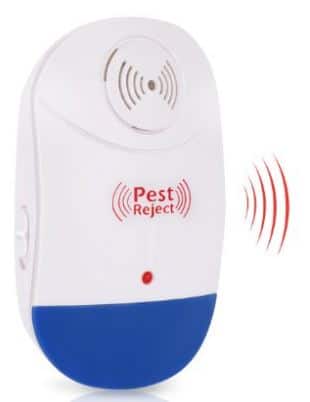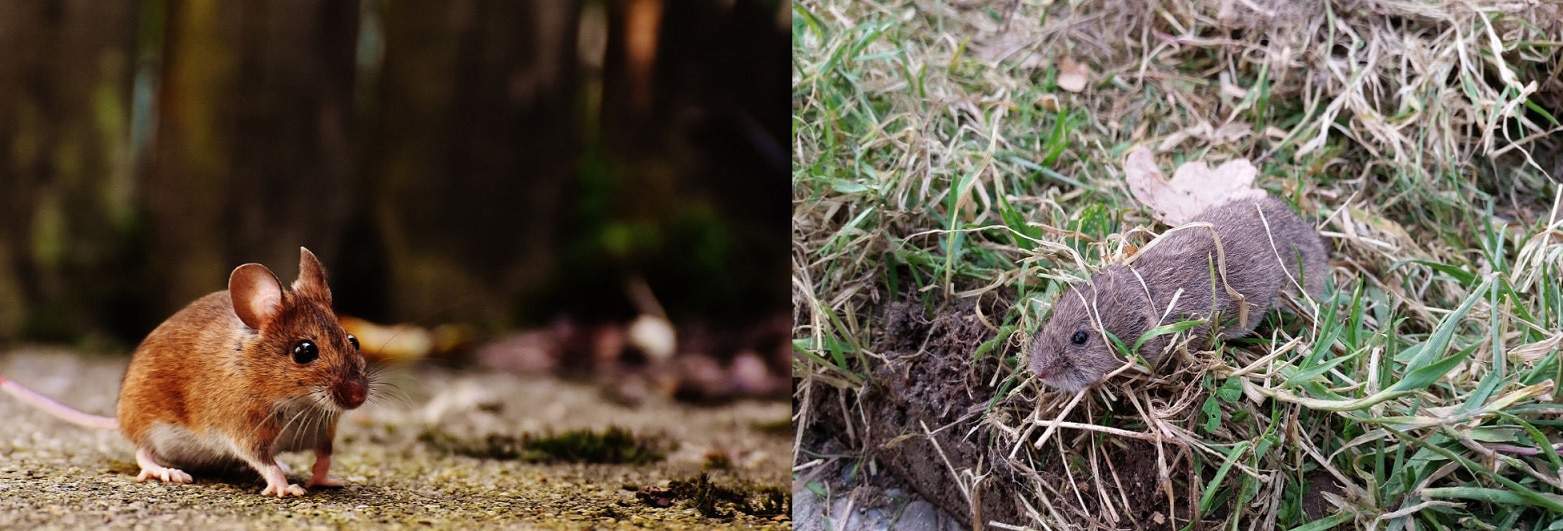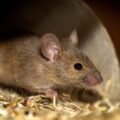Table of Contents
Winter can be a tough time for many animals, as temperatures drop and food becomes scarce. Small rodents such as rats and mice are no exception.
Many wild animals hibernate to conserve energy during harsh winters, while others have learned to adapt and remain active through the colder months of the year. So what about the rodents that love to invade our homes?
Do rats hibernate, you may wonder? Read on to know what actions you need to do in case there is a rat or mouse infestation inside your home.
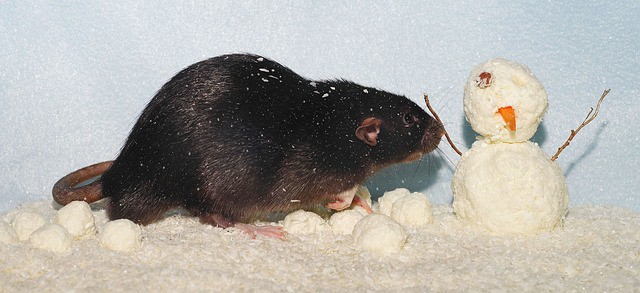
Rats And Mice Do Not Hibernate!
Nope, mice and rats don’t hibernate. It would be nice if they did; homeowners could rest easy during the winter, and not worry about scurrying home invaders.
Sadly, instead of taking a three-month dirt nap, these rodents are able to find ways to stay warm, active, and well-fed during the winter months.
Of course, since they aren’t hibernating, rats and mice have to attend to basic needs all winter long.
That means finding food, water, and shelter – and continuing to obey the prime directive, which is to make more rats or mice.
This can pose a problem, especially if they decide your house is a good base of operations!
How Do Mice And Rats Survive In The Winter?
Hibernation is a mechanism used to survive extended periods of cold weather where resources are limited. If rats and mice don’t hibernate, then how do they survive in the winter?
In many cases, rats and mice can survive the winter out of doors, scraping out little nests to hide in. They can venture out in the warmest part of the day to look for food, and return to the nest at night.
Many species will nest in groups, huddling together to conserve body heat. Some manage to create a food cache nearby, giving them a pantry to turn to when it’s raining or snowing.
Sometimes, however, the temperatures drop too much, or outdoor environments become too wet; they need better shelter.
That’s when mice and rats will go looking for food, warmth, and hiding places – and where better to find those things than in a human abode?
Before you know it, you could have a horde shacking up in your home.
Where Do They Go When It’s Cold Outside?
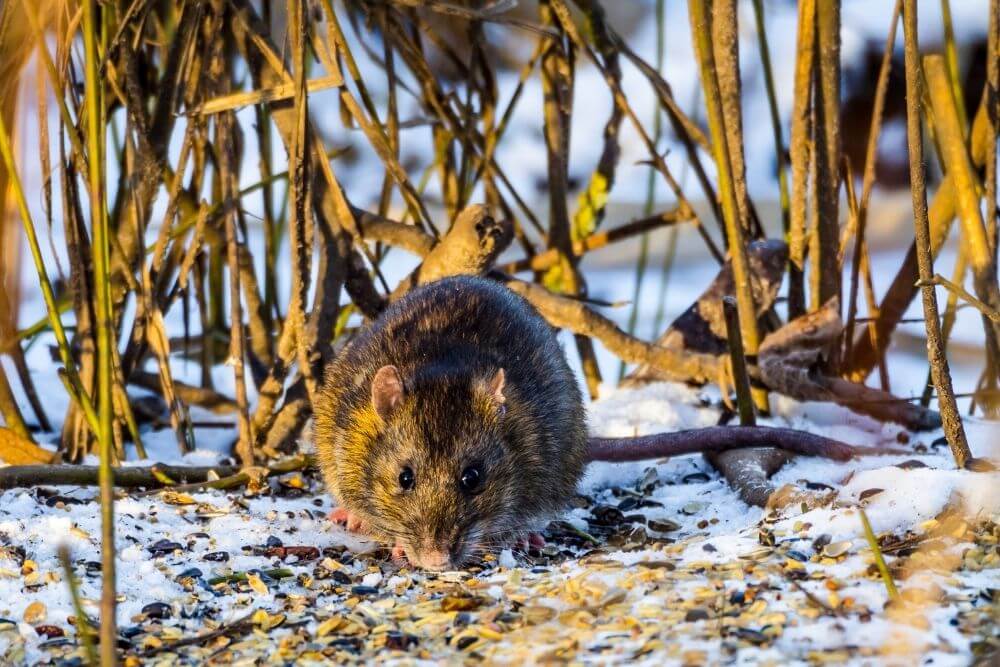
Different species of rats and mice have different nesting patterns. However, they are all relatively quick to abandon rough living for life in a cozy warm house.
Deer mice typically like to live above ground and will co-opt the nests of birds, squirrels, or other wildlife to convert into a family group home. Ten or more deer mice can be found in a single nest to conserve heat.
Deer mice move homes often, as they foul their own nest and it can become stiff with droppings. Deer mice can get into garages when it’s cold outside, and build a nest under the hood of an unused vehicle.
They may enter a dormant state when it is very cold, but it’s merely a torpor, not true hibernation.
Field mice and harvest mice make nests in the grass or in small scrapes in the ground, using blades woven together to build shelters that they can hide in and stay warm. As winter approaches, field mice tunnel down and make a grass-lined nest in a depression with a woven grass top to protect against predators.
This tunneling behavior sometimes makes people think that these mice are actually voles.
Harvest mice, by comparison, move up just off the ground and build in low vegetation.
Like deer mice, field and harvest mice will eventually make such a mess they have to abandon the nest and create a new one. They often find holes in walls and move their families indoors to escape the cold.
Wild house mice and white-footed mice can make very elaborate homes out of the grass, threads, and other items they find. The home will often have two compartments – one for sleeping and one for food storage.
They may live in their home longer than other mice, as they try to keep their nest cleaner.
Wild house mice live in family groups of up to 100 mice, but the males can be extremely territorial. They will try to make a nest anywhere they feel has adequate shelter from the cold.
You can find wild house mice and white-footed mice in places such as in the corner of a garage, in an attic space, or inside anything not frequently disturbed in winter, like stored camping gear.
Norway rats, also known as sewer rats, often live underground, in burrows, subways, and sewers. They are excellent swimmers and can travel over distances to infiltrate almost any setting to create a home.
They can also chew through almost any kind of material and make passageways for themselves. Norway rats live in large family groups and can share body heat inside their burrows or constructed nests.
If it’s too cold out of doors, they will flee their burrows to nest in the basements of human dwellings.
House rats (also known as ship rats, black rats, palm rats, or roof rats) will often live in burrows, or create nests in tree cavities or branches.
They are well adapted to cold weather survival and can breed year round even when it’s very cold.
House rats are excellent climbers and often enter homes and climb to the highest point possible (usually an attic or crawl space) to build a nest. Males roam, while females stay close to the nest to raise their young.
Woodrats will make extensive nests systems in trees and line them with multiple layers of warm materials.
Winter Survival Mechanisms
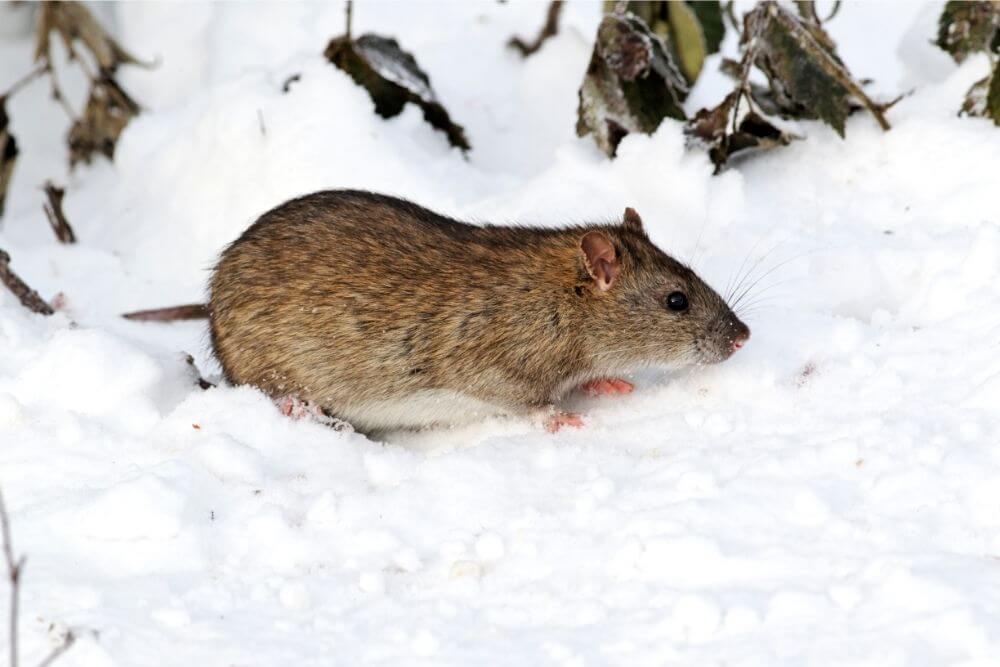
Moving around a lot is how many rodents and small animals keep their body temperature high in cold weather. In many cases, breeding is a great way to get in some extra activity.
So is scavenging for food. Then it’s back to the nest for a little more old-fashioned fun.
By the time spring rolls around, you could have a small homegrown army to deal with. Mice and rats breed so quickly and reach maturity so fast that in no time your home can be overrun.
You’ll have a brigade of unwanted company in your house, eating your food, tearing apart your insulation, and leaving a mess of droppings everywhere.
You may think you can keep mice and rats at bay by storing foodstuffs in sealed containers, but rats, in particular, will eat a third of their weight a day of almost anything they can find.
This includes fresh or moldy food or even rotting meat; all types of grains, eggs, cheese, and candy, as well as non-food items like cardboard, soap, and even their own droppings.
Rats and mice can also be hoarders and will bring in anything they can find to eat from the exterior of your house.
They’ll store it and snack until you make a mistake and leave something else out. Or they may just keep bringing their food supply in and hiding it.
Keeping Rats And Mice From Invading Your House In The Winter
The best way to keep mice and rats from moving in is not to attract them in the first place. Rats and mice who invade human homes typically do so in search of the following:
Food
During winter months, scavenging out of doors can mean slim pickings, and body heat lost while looking for food.
Shelter
Many places in a house or garage are warm and dry – both attractive nesting places for rodents.
Heat
Even in an unheated attic or basement, being inside a house is warmer than being exposed to the elements.
Safety
Human homes are safe spaces from wild predators that might see a rat or mouse as a tasty snack.
Know the signs of a rodent invasion. In the case of mice, you may have to be more vigilant, because until they are present in large numbers, they may be able to hide from you.
However, even just one or two rats will quickly make their presence known, as they are bigger, louder, and more prone to make a mess building their nests out of any junk they can find.
Signs Of Rodent Infestation
Here are the more obvious signs of rodent infestation:
Nesting Material
This can include shredded materials like paper, cardboard, string, or even wires or garbage scattered about.
Tracks
Little feet can leave a train in dust, dirt, or grime. Look for tracks in dark corners missed by a broom, or in grease spots on a garage floor where a vehicle is parked.
Damage
Rodents need to chew on hard things to keep their teeth worn down, and will attack food containers, PVC pipes, cables, and even metal objects. They will also gnaw through floors, walls, and roofs.
Droppings
Mice leave tiny droppings about the size of a grain of rice, while rat droppings are larger and can be in clumps. Droppings can be a disease vector, so avoid breathing their dust.
Hint: if you store firewood near your house, keep it off the ground to deter them from burrowing there. It’s an ideal place for them to nest. Old tires can also make an attractive ceiling to a rat burrow, as can piles of any type of junk or debris.
Two Types Of Rodent Repellants
Use rodent repellents to keep mice and rats out of your home.
Electronic Repellents
Devices that emit a high-pitched ultrasonic noise above the hearing range of a human are an attractive option. However, most rodents will eventually overcome their aversion, as the need for food and shelter outweighs their discomfort.
There are also reports that these devices have unwelcome side effects.
Natural Repellents
These fall into two classes – repellents that smell bad (which contain ingredients like balsam fir oil or peppermint oil, both of which smell pleasant to humans but bad to rodents), and repellents that taste bad (which contain ingredients like black or red pepper extracts, or castor oil.)
Smell-based repellents will have to be reapplied regularly to make rodents avoid your home.
Repellents that prevent rodents from chewing will have to be reapplied if washed away by rain.
Natural repellents can be used in combination with poison and traps to clear a bad infestation.
Regular continued use can keep mice and rats away from your home indefinitely.
Conclusion
Mice and rats don’t hibernate, and neither should you. Vigilance is key!
If you have just started seeing signs, implementing preventive measures can often scare off freeloading rats or mice thinking about setting up an unpaid sublet situation in your home.
Natural, safe prevention is always a lot easier and more effective than trying to stop a full-blown infestation.


